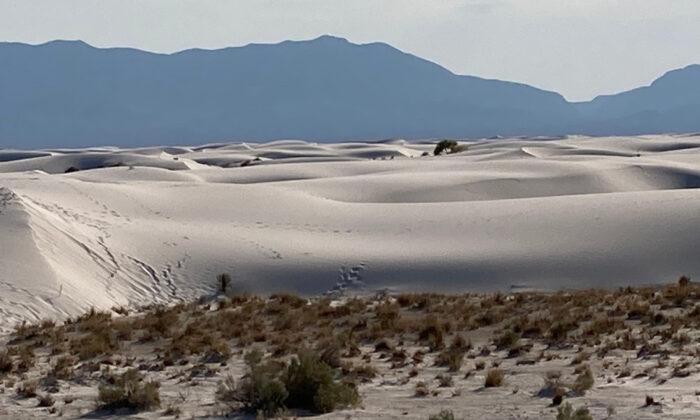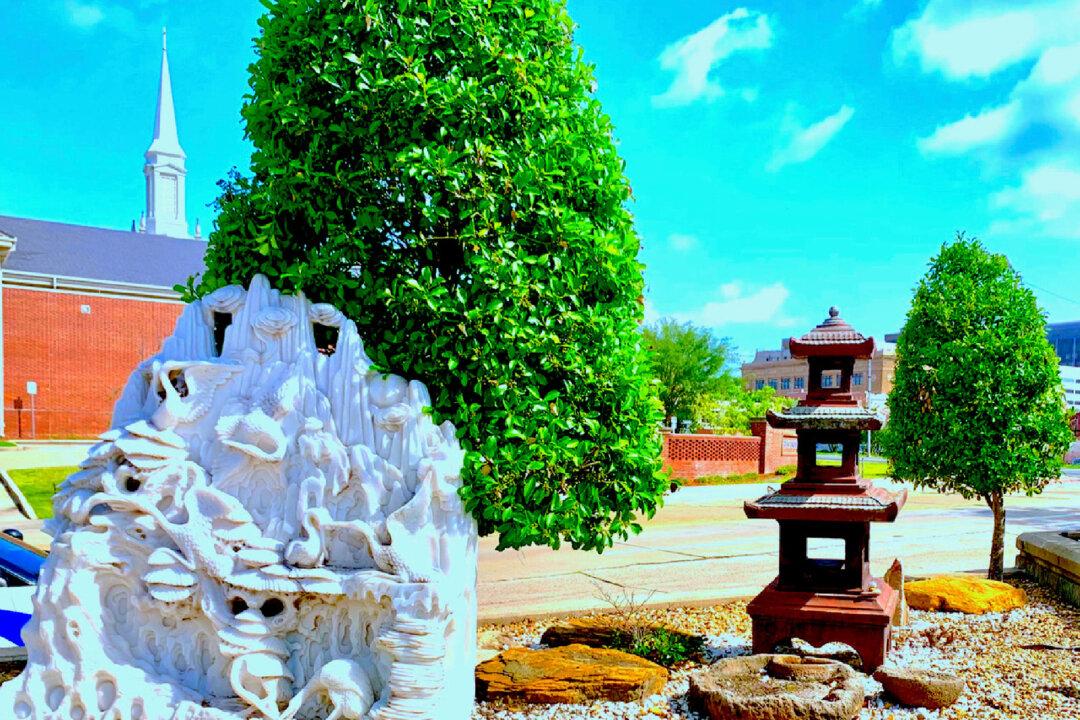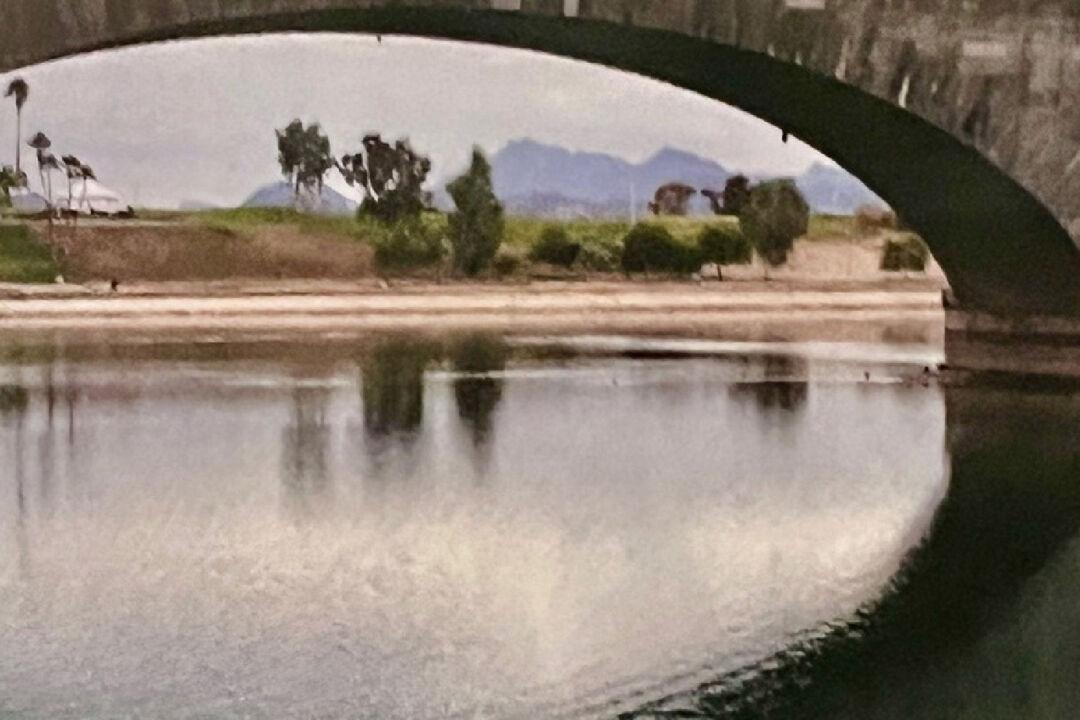The town of Alamogordo is a perfect location for visiting Alamogordo White Sands National Park. We enjoyed several nights at the Alamogordo White Sands KOA campground, which allowed us plenty of time to see this natural wonder.
Alamogordo White Sands National Park covers 275 square miles of the Chihuahuan Desert. The largest gypsum field in the world, it is the remains of the Permian Sea, which dried up millions of years ago. In 1933, President Herbert Hoover proclaimed this to be a national monument. The dune fields just outside the monument were used as weapons testing sites.
In fact, White Sands Missile Range still regularly conducts missile tests here, so before you go, check the National Park Service website to determine if the highway and park are open. Testing is done for a couple of hours about two days a week, and the times are posted online.
In 1945, during World War II, Trinity Site, 100 miles north of Alamogordo, was used to test the first atomic bomb. The park entrance is on U.S. Route 70, 54 miles east of Las Cruces, and 15 miles southwest of Alamogordo. At the visitor center, you will learn the history of the amazing white gypsum sands in a very good free movie and receive information about programs and activities from the park rangers.
It is important to wear hats, sunglasses, and sunscreen all year-round as well as to take plenty of water with you as there are no concessions. Dunes Drive goes to the heart of the park, and signs and roadside exhibits indicate interesting places and information along the way. Cars are not allowed off the road or through the dunes, but there are paved parking places and self-guided walking tours. The national park provides accessible paths, and there is a good boardwalk. Picnic areas in designated sites have tables, shade, restrooms, and trash cans, but no water.
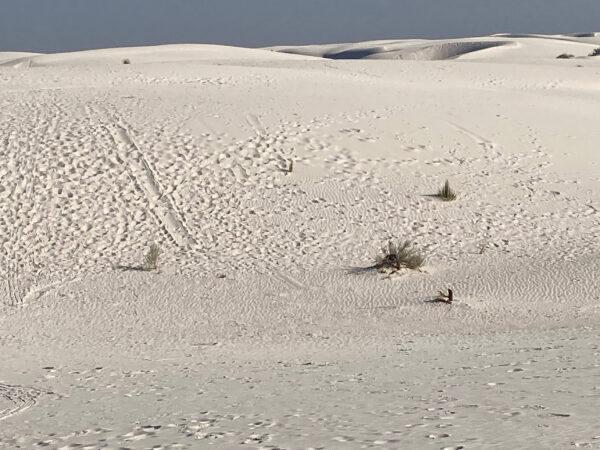
We looked for the small bleached Apache lizards, but none were out while we were searching. We also hoped to see the pale pocket mice, which also live here. It seems that desert animals are wise enough not to come out in hot periods, and many, such as the kit fox, are nocturnal.
We saw lots of family groups having fun with sleds, which are permitted on the dunes. You can bring your own or buy a sled and wax at the park gift shop. Sand sledding is different from sledding on snow, so be sure to wax the runners on your sled.
Sand hills are not easy to climb. Our feet either sank deeply or slid back a half-step for every step we took. Still, it was fun to climb up, leaving our footprints among the millions of others in the dunes. Because we were there during a June with record heat, we waited until after 6 p.m. to venture into the sand on foot, but we were able to walk barefoot with no discomfort. Shallow water beneath the gypsum dunes keeps the sand temperatures perpetually cool. Unlike sand, gypsum does not stick to the skin and is easily shaken off.
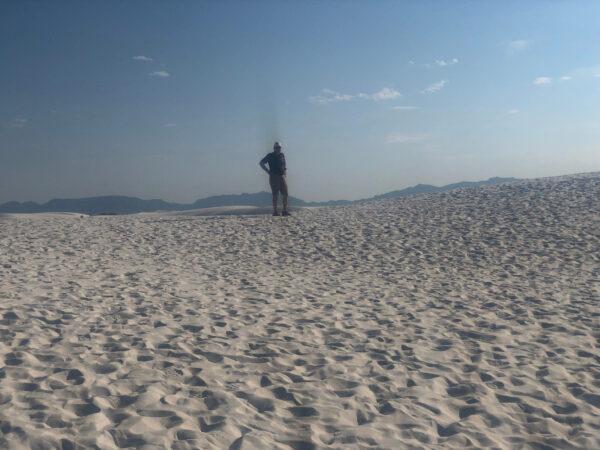
Strong, frequent southwesterly winds blow these dunes almost constantly, moving them, sweeping them down, and rebuilding them in other places. In some areas, we saw a plant residing on a tower of sand. This is because the roots of the skunkbush sumac extend deeply and keep the plant firmly in place even when the sands blow away around it. These are good hiding places for the kit foxes.
Other plants such as sand verbena are beautiful blooming in the sand, but these have shallow roots. However, they spread seeds and grow to flowering maturity in one season, so they continue to live delicately at White Sands. Dying soaptree yucca plants lean over in some places because although they can hold on with deep roots, when the sand moves on, the exposure soon kills them.
We had hoped to stay beyond the gorgeous sunset to see the stars come out as there is no light pollution here, but we needed to get going. Sometimes the park stays open late for special events, such as full-moon viewing. We'll catch that next time.
When You Go
NPS.gov/whsa/planyourvisit/park-closures.htm
Bonnie and Bill Neely are freelance writers. To read features by other Creators Syndicate writers and cartoonists, visit the Creators Syndicate website at Creators.com. Copyright 2021 Creators.com

